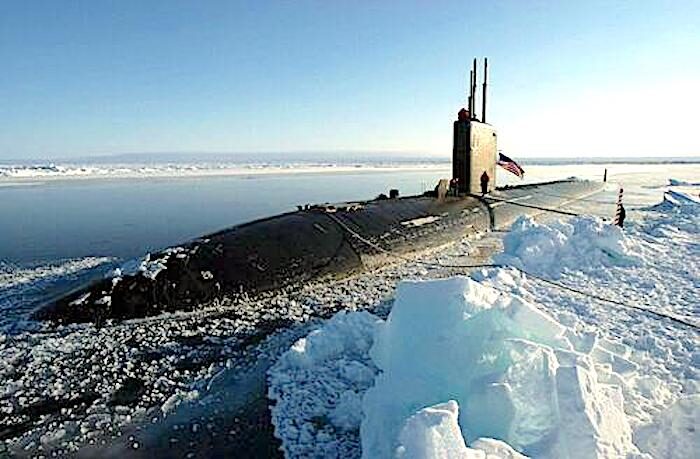OF THE
TIMES
Heaven and hell are eternal places because they are always present at the extremes of human existence, for better or for worse. People are constantly choosing between them, although they are generally not conscious of that in an articulated manner.
The bedrock of Free Speech is the freedom to criticise those in authority.
Comment: Boeing now seems to specialise in its own kind of doomsday aircraft: Boeing 737 crashes off runway after gear failure, comes day after...
Experts say that the Stone of Destiny was a doorstep Experts ? Had we not enough trouble with "experts" lately ?
Of course one way the US used to rule the world was to 'educate' foreigners in the US with western values, then send them back to be the ruling...
Hello folks! Has everyone forgotten that Arabs are also Semites??
To submit an article for publication, see our Submission Guidelines
Reader comments do not necessarily reflect the views of the volunteers, editors, and directors of SOTT.net or the Quantum Future Group.
Some icons on this site were created by: Afterglow, Aha-Soft, AntialiasFactory, artdesigner.lv, Artura, DailyOverview, Everaldo, GraphicsFuel, IconFactory, Iconka, IconShock, Icons-Land, i-love-icons, KDE-look.org, Klukeart, mugenb16, Map Icons Collection, PetshopBoxStudio, VisualPharm, wbeiruti, WebIconset
Powered by PikaJS 🐁 and In·Site
Original content © 2002-2024 by Sott.net/Signs of the Times. See: FAIR USE NOTICE

Reader Comments
Johari’s Window Intelligence analysts in the U.S. intelligence community (IC) have long used analytical techniques described by two American psychologists, Joseph Luft and Harrington Ingham in a concept named Johari’s Window created in 1955. Johari’s Window popularized the concept of known knowns, known unknowns, and unknown unknowns and was adopted by the U.S. IC in order to identify blindspots in what we know and don’t know when analyzing data it referred to as informational blind spots.
As its name describes, the Johari window is represented as a four-paned window, with each of the two panes in the quadrant representing one’s self and the other two panes representing the part unknown to ourselves but known to others.For the purposes of this article it is not necessary to fully delve into the conceptual framework underpinning Johari’s Window. However, the idea of known knowns and known unknowns comes from this concept, so the it is worth taking some time to demystify these two ideas that are derived from the model at a superficial level.
The Johari Window [Link]
check it out …. 👇
Bill Gates Microsoft Windows logo [Link]
[Link]
It described an underwater vehicle that was accelerated to such a high velocity that friction caused the entire skin of the vehicle to be surrounded with a layer of super-heated steam. The effect of this was to allow it to slip through the dense liquid without being slowed. Wonder if those pesky Russians are at it again. Supersonic torpedoes anyone?
I hope Odessa gives up the goods soon enough.
maybe it was being "pulled" magnetically....and presumably, assuming it had any mass, designed "shape-wise" to move fast with minimal resistance...maybe it was even coated with teflon or some such....
It could be I reckon.
I don't believe this guy.
Well, the atom is as well. So why is it hard to imagine that some intelligent species has figured out how to transverse through matter intact? That would 'splain being able to travel through water at unheard of speeds.
"A supercavitating torpedo is a torpedo using the effect of supercavitation to create a bubble around the torpedo to move at high velocity under water. The following is a list of supercavitating torpedoes which have been developed or are in development...
The VA-111 Shkval (from Russian: шквал, squall) torpedo and its descendants are supercavitating torpedoes originally developed by the Soviet Union. They are capable of speeds in excess of 200 knots (370 km/h or 230 miles/h).[1]"
They were first developed in the late 70s, are currently in use by the Russian and Iranian navies, use solid rocket fuel as a propellant and can carry both conventional and nuclear payloads
You can imagine how far the Russians have developed this since the 1970s . Speed of sound?
[Link]
Russians are extremly open about everything, not at all the western trope about secretive russians. It unfortunatly only in russian as they don't give rats arse about translating into other languages. When you learn basic russian a whole new world opens, not only in this case but in many other fields as well (history technics etc.)
Secrets of 3 oceans - in hunt for ghosts (only in russia unfortunatly)
[Link]
Laughable human submarine "depth" means almost the entire ocean floor belongs to the aliens: [Link]
Germany has also. Superkavitierender Unterwasserlaufkörper
Supercavitating Torpedo [Link]
Boron-powered Chinese missile will work in the air and underwater [Link]
China has experimented with solid fuel that contains boron nanoparticles for its air-breathing scramjet engines, SCMP said in its report. Even the U.S. Navy has successfully experimented with boron nitride nanotubes in its hypersonic weapons.
China Unveils Boron-powered Supersonic Missile Blueprint [Link]
sound moving fast in water is one thing, a solid object, nahhh!
it would take a technology out of this world to produce something
that move that fast in water without causing big water upheavals
or for that matter, extremely water resistance to it.
And I don't think you are a distraction, neither you nor any others post here.
Doesn't mean I'll ascribe to what you say, post, or link.....just means I don't think you are a distraction.
Darwin I think just wanted to share good ideas, but Kropotkin was correct that Darwin's ideas were subsumed by elitist for their own perceived ends, but like all act of ill will, these perceived ends are now twisting upon the nefarious ones as they get lost in the maze of their own making - guess they can only learn the hard way and a shame that is - for them as us both, but mostly for them.